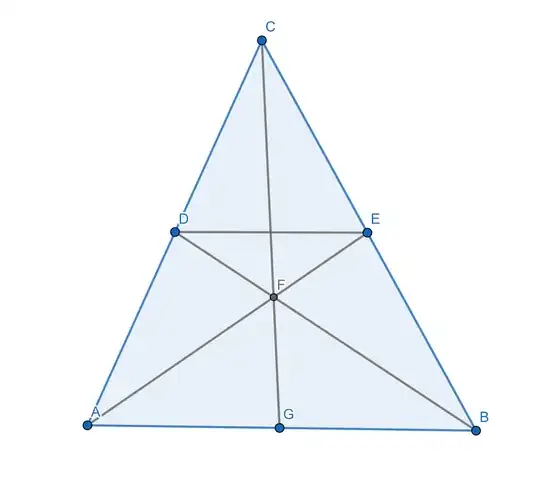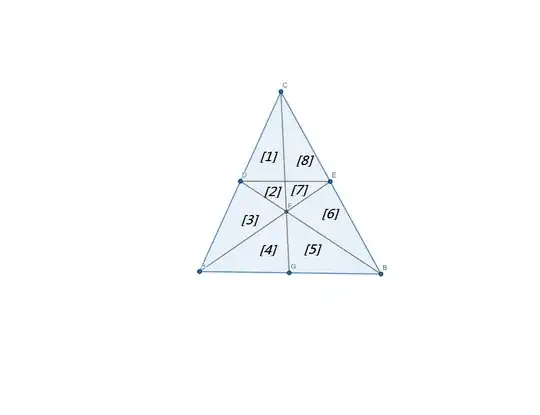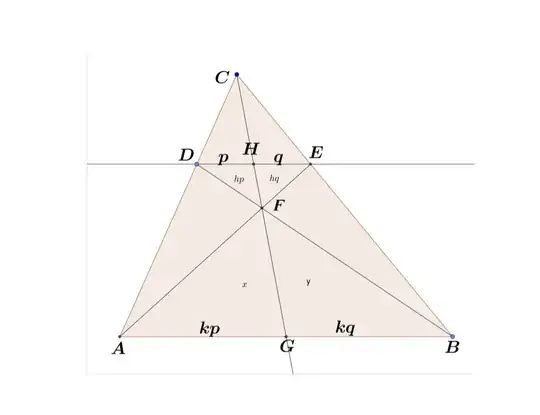In the following triangle, AB is parallel to DE. F is an intersection point of the segments BD, AE and CG. Is it true that AG = GB?

- 90,026
- 1,512
-
This problem comes up very frequently in different contexts of Euclidean/Projective geometry. Ex.: link – krazy-8 Feb 02 '21 at 03:51
2 Answers
In the following, I have incorrectly assumed D and E are the midpoints of CA and CB respectively. Please jump right to the section labeled as "CORRECTED version".
We can play withit using areas. The respective regions are labelled as shown.

(1) + (2) = (3) = (6) = (8)+ (7)
∴ (1) + (2) + (3) = (6) + (8)+ (7) = x, say
$\dfrac {x + (4)}{x +(5)} = \dfrac {(4)}{(5)}$
This gives (4) = (5) and the required result follows
CORRECTED version
Let C(F)G cut DE at H. Suppose that DH : HE = p : q.
Then, (1) by similar triangles, AG = kp and GB = kq for some non-zero constant k; (2) by triangles with the same altitude, [FDH] = hp and [FEH] = hq for some non-zero constant h.
Let [AFG] = x and [BFG] = y. Then, by considering areas of similar objects, $x = hq \times (\dfrac {kp}{q})^2$ and $y = hp \times (\dfrac {kq}{p})^2$.
Therefore, $\dfrac {x}{y} = … = (\dfrac {p}{q})^3$
Since, by considering area of triangles with the same altitude, $\dfrac {x}{y} = \dfrac {kp}{kq}$
From $(\dfrac {p}{q})^3 = \dfrac {kp}{kq}$, we have $p = q$ after rejecting the negative quantities.
- 17,141
-
-
This is because the two triangles have the same altitude and their bases are equal. hence they are equal in area. – Mick Feb 03 '21 at 03:28
-
-
1@MinimusHeximus The diagram misled me to wrongly assume that D, E are the midpoints. If I cannot fix it, this post will be deleted shortly. – Mick Feb 05 '21 at 05:35
-
1@MinimusHeximus Sorry for the wrongly-assumed answer. Please see the CORRECT version. – Mick Feb 05 '21 at 07:47
Yes, use Ceva Theorem: $${AG\over GB}\cdot {BE\over EC}\cdot {CD\over DA}=1$$ and Thales theorem: $${CD\over DA} = {EC\over BE} $$ and thus a conclusion.
- 90,026
